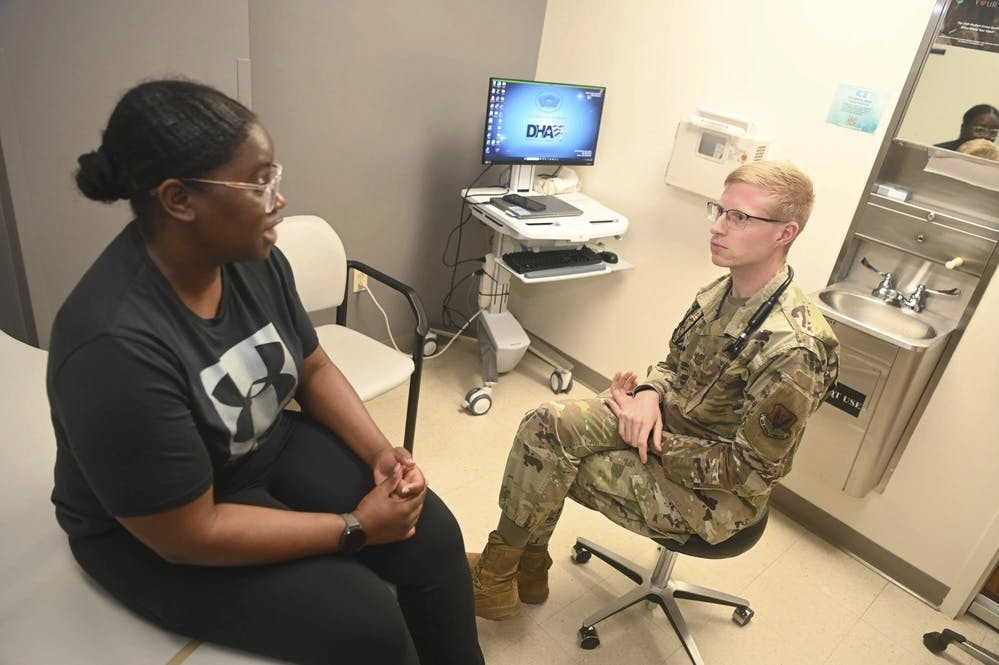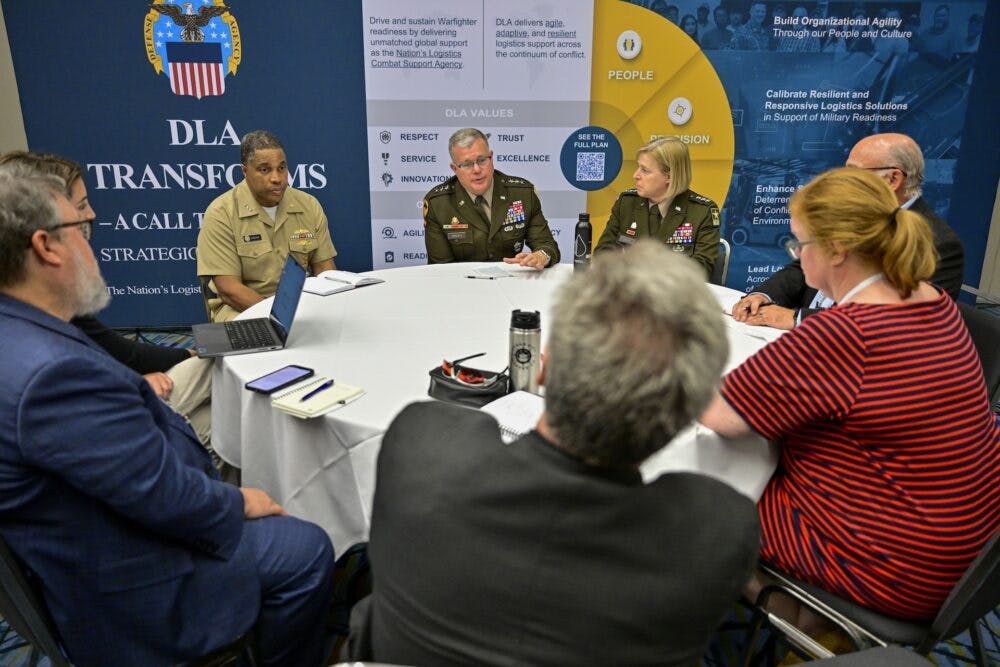ONC is Creating New Frameworks, Standards to Improve Data Sharing
ONC leaders unpack the new frameworks and data standards that are creating an interoperability floor across the health care landscape.

The Office of the National Coordinator for Health IT (ONC) is building upon the 21st Cures Act mandates to improve data sharing and create a seamless experience for patients by advancing its Trusted Exchange Framework and Common Agreement (TEFCA) and United States Core Data for Interoperability (USCDI).
ONC was established through an executive order in 2004 and legislatively mandated in the Health Information Technology for Economic and Clinical Health Act (HITECH Act) of 2009. Through its work, ONC has prioritized two key objectives: advance the development and use of health IT capabilities and establish expectations for data sharing.
The later 2016 21st Century Cures Act outlines the path forward for cross-government interoperability and data exchange and serves as a north star for ONC’s strategic priorities.
“An important element of the digital foundation that we’ve all been working toward over the last decades of implementing electronic health records is to have a minimum dataset or standard dataset. … So, if it’s needed for emergency care purposes, or for other purposes, that everyone can count on that,” National Coordinator for Health IT Micky Tripathi told GovCIO Media & Research in a recent HealthCast.
To bolster this “digital foundation” and build upon its baseline for interoperability, ONC has made new strides since the beginning of the year across its portfolio, including promoting the 21st Century Cures Act, advancing TEFCA and expanding the USCDI.
HTI-1 Proposed Rule
In April, ONC released the ‘Health Data, Technology, and Interoperability: Certification Program Updates, Algorithm Transparency, and Information Sharing (HTI-1) Proposed Rule’ to further implement the 21st Century Cures Act and increase the effectiveness and accessibility of electronic health data exchange, which is essential for health care delivery across the country.
Under the proposed rule, ONC aims to update the minimum sharable dataset, health IT certification program, information-blocking regulations and the adoption of the USCDI.
“In addition to fulfilling important statutory obligations of the 21st Century Cures Act, implementing these provisions is critical to advancing interoperability, promoting health equity, and supporting expansion of appropriate access, exchange and use of electronic health information,” Tripathi said in a statement.
Ultimately, HHS leaders say the new rule will increase interoperability and promote information sharing.
“We want to do everything we can to create mechanisms and structures to allow for the sharing of information and make that as easy as possible to reduce the burden of that to reduce the threshold [and] allow people to be able to share information as easily as possible,” Tripathi said during an information session in April.
As the adoption of EHRs continues to increase, Tripathi says it’s imperative to build a strong digital foundation.
“It’s about shared assets and shared infrastructure, all the things we’ve been doing in the private sector we now want to bring to the public health sector,” Tripathi said during the CDC-ONC event in February.
TEFCA Creates a Baseline for Interoperability
TEFCA provides the legal baseline for information exchanges and interoperability nationwide. As agencies work to increase interoperability across health information networks TEFCA outlines a path that provides health information efficiently and securely.
ONC published TEFCA in 2022 to meet the 21st Century Cures Act mandate, which called on the agency to improve data sharing.
“We want to be able to create a uniform floor of interoperability so that every authorized entity and authorized user — including individuals — have a baseline expectation of being able to get basic health care, medical record information securely and reliably across the network,” Tripathi said when ONC published its TEFCA in 2022. “We also want to be able to greatly simplify connectivity. … And then we also have to enable the ability to locate aggregate information in a patient-centric way.”
For the health care industry, agencies are using TEFCA to their advantage. CDC and ONC are working with state, tribal, local and territorial communities to identify early adopters and help them forge the path forward to encourage other members of the public health community to adopt the framework.
“TEFCA will improve health and safety. It takes us to the next level,” Department of Health and Human Services (HHS) Secretary Xavier Becerra said in February when ONC recognized TEFCA’s Qualified Health Information Networks (QHINs). “Part of what defines the 21st century digital health care system is interoperability. Healthcare interoperability is critical if we’re going to talk health care national infrastructure.”
As TEFCA provides seamless communication and cuts out data entry, it also helps eliminate the digital divide across agencies. In addition, TEFCA closes gaps across the board including: “health agencies’ lack of access to health exchange networks and actionable health data, challenges with payer-provider exchanges, barriers to patient data access and more,” Tripathi said.
“[TEFCA is] unlocking not just a better course of treatment for one individual, but we’re starting to use the power of the data that’s becoming available to unlock better courses of treatment for thousands – and then ultimately for millions – of people, and this really showing the power scale,” said Dr. Arati Prabhakar, director of the White House’s Office of Science and Technology Policy (OSTP) and assistant to the president for science and technology said during an HHS Event Recognizing QHIN Applicants in February.
USCDI Transforms Data Sharing and Reporting
Alongside TEFCA, the U.S. Core Data for Interoperability (USCDI), a combination of health data classes and elements for interoperable health information exchange nationwide, is providing new data initiatives. USCDI has established a core set of data to support patient care in order to reach interoperable at every level.
USCDI provides a standardized baseline of health data classes and regularly releases new data classes and elements to stay ahead. In May 2020, USCDI began with 52 data elements, but the elements have expanded to nearly 100. The new requirements range from making data elements accessible through EHRs and adding classes for health status, equity, health insurance information and accessibility.
According to ONC, the additional data elements are crucial for health equity and improving analytics. The changes that USCDI present give a peek into what’s ahead for the future and ONC plans to release a final USCDI version 4 in this summer, which aims to boost health legislation and improve EHR exchange. Industry leaders and agencies can provide feedback before the rule is published in July 2023.
“What we have done in this is try to provide some capabilities for transparency to users about the algorithms that a certified technology developer has incorporated in the EHR system, so that the user has the ability to have an understanding of what algorithms are incorporated in that technology and certain characteristics of those algorithms,” Tripathi said during the information session in April.
On the Horizon
Across agencies, data interoperability is top of mind, and collaboration across agencies is essential to reach full scale seamless data exchange.
“At ONC, we’re doing everything to be a services partner to our HHS partners,” Tripathi said during the CDC-ONC event in February.
Tripathi hopes USCDI will become a nationwide public health data model.
“USCDI has quickly become the core fabric of healthcare delivery system,” Tripathi added. “It’s not only required in EHR certification, it’s also required in corresponding CMS access rules and regulations related to APIs.”
In addition, Tripathi says USCDI provides the entire package because it includes elements from health equity, race, ethnicity, language, status and health insurance information.
“We don’t have to compromise on building infrastructure at every stilt because of the authorities and concerns about sharing data,” Tripathi said. “We can have shared assets in cloud environments in the cloud business models that allow for the protection of that data, the isolation of that data and the exposure of it to other parties for all the uses that party agrees to.”
This is a carousel with manually rotating slides. Use Next and Previous buttons to navigate or jump to a slide with the slide dots
-

The Next AI Wave Requires Stronger Cyber Defenses, Data Management
IT officials warn of new vulnerabilities posed by AI as agencies continue to leverage the tech to boost operational efficiency.
5m read -

Federal CIOs Push for ROI-Focused Modernization to Advance Mission Goals
CIOs focus on return on investment, data governance and application modernization to drive mission outcomes as agencies adopt new tech tools.
4m read -

Agencies Push Data-Driven Acquisition Reforms to Boost Efficiency
New initiatives aim to increase visibility of agency spending, improve data quality and create avenues to deploy solutions across government.
5m read -

Data Transparency Essential to Government Reform, Rep. Sessions Says
Co-Chair of the Congressional DOGE Caucus Rep. Pete Sessions calls for data sharing and partnerships to reduce waste and improve efficiency.
5m read -

DOD Can No Longer Assume Superiority in Digital Warfare, Officials Warn
The DOD must make concerted efforts to address cyber vulnerabilities to maintain the tactical edge, military leaders said at HammerCon 2025.
4m read -

DHA CDAO Spearheads Master Data Catalog to Boost Transparency
Jesus Caban plans to boost DHA's data maturity through a new master data catalog, governance frameworks and inventory of tech tools.
5m read -

IHS Prepares to Deploy PATH EHR at Pilot Sites in 2026
IHS targets PATH EHR pilot in 2026, emphasizing governance, collaboration and interoperability as key pillars of the modernization strategy.
4m read -

IRS Makes Direct File Code Public as Lawmakers Debate Program’s Fate
The agency sees the Direct File source code as beneficial to government digital services despite what happens with it in proposed budgets.
5m read -

A Look at Federal Zero Trust Transformation
Recent developments from CISA and DOD show how government is advancing zero trust quickly.
20m read -

FEHRM CTO Targets Two-Year Cloud Migration for Federal EHR
Lance Scott touts new EHR tech advancements, including cloud migration, expanded data exchange and AI integration to improve care delivery.
4m read -

New Army Acquisition Plan Cites Autonomy, Predictive Analytics
Officials outline how the Army Transformation Initiative signals a broader shift toward efficiency with tech and acquisition reform.
4m read -

DOE National Labs Launch New AI Tools for Operational Efficiency
The Energy Department's National Laboratories are using AI to increase operational efficiency and drive research efforts forward.
3m read
















